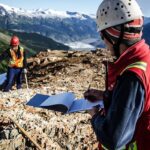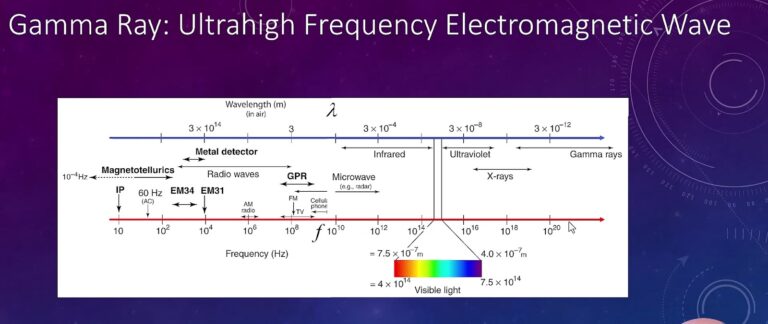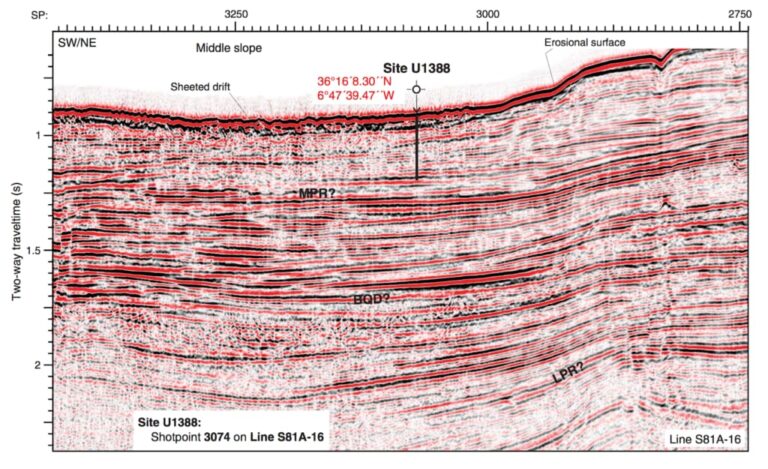
Exploring Seismic Amplitudes: Decoding Earth’s Mysteries
Seismic traces graphically represent amplitude versus time, reflecting the displacement of a point along a seismic wave. Amplitudes, oscillating between peaks and troughs, hold crucial seismic data.
The Interplay with Geology
Seismic traces serve as a cornerstone for geological interpretations across various dimensions. While not directly proportional to geological contrasts, seismic amplitudes exhibit a discernible relationship. Significant contrasts yield prominent amplitudes, while subtle ones manifest as diminutive ones.
Seismic traces serve as graphical representations of amplitude versus time, depicting the displacement of a point along a seismic wave from the zero crossing. These traces encapsulate vital seismic data, oscillating between positive peaks and negative troughs:
- Seismic Amplitudes and Geological Interpretations. Seismic traces are foundational in various geological interpretations across different dimensions. While seismic amplitudes aren’t directly proportional to geological contrasts, they exhibit a discernible relationship. Significant contrasts yield prominent amplitudes, while subtle contrasts manifest as diminutive ones;
- Influence of Geological Factors. An array of geological and technical variables intricately influences seismic amplitudes. Factors such as lithology, porosity, reflector geometry, and acquisition footprint leave their imprint on seismic data, transcending mere geological interfaces;
- Challenges in Interpretation. Interpreting seismic amplitude patterns presents challenges, evidenced by nuances observed in datasets like the F3 Block offshore Netherlands. These complexities necessitate a nuanced understanding and interpretation of seismic data to accurately unveil geological insights;
- Mechanisms and Precision. Seismic amplitudes are traditionally recorded using geophones or hydrophones, with post-processing rendering them unitless and arbitrary in magnitude. However, precision remains crucial, emphasizing the interpreter’s need for meticulous data comprehension.
Delving into seismic amplitudes offers a journey of deciphering geological mysteries through meticulous analysis and interpretation of seismic data. This ongoing journey enhances our understanding of Earth’s evolution and geological dynamics.
Factors Influencing Seismic Amplitudes
A myriad of variables intricately impact seismic amplitudes, surpassing mere geological interfaces. From lithology and porosity to reflector geometry and acquisition footprint, seismic amplitudes carry the imprint of numerous geological and technical factors.
Navigating Interpretation Challenges
Interpreting seismic amplitude patterns poses challenges, evidenced by complexities observed in datasets like the F3 Block offshore Netherlands. These complexities necessitate a nuanced understanding and interpretation of seismic data for accurate geological insights.
Mechanisms and Precision in Recording
Seismic amplitudes are traditionally recorded using geophones or hydrophones, with post-processing rendering them unitless and arbitrary in magnitude. Despite this, precision remains paramount, emphasizing the interpreter’s need for meticulous data comprehension.
In the Quest for Understanding
Delving into seismic amplitudes offers a journey of deciphering geological mysteries through meticulous analysis and interpretation of seismic data. This ongoing journey enhances our understanding of Earth’s evolution and geological processes.
The interplay between seismic amplitudes and geology reveals a profound narrative of Earth’s intricate tapestry. Navigating the complexities of seismic data interpretation provides insights into geological structures and deepens our understanding of our planet’s evolution. Each deciphered amplitude modulation brings us closer to unraveling Earth’s enigmatic past, present, and future.
Conclusion
The interplay between seismic amplitudes and geology reveals a captivating narrative of Earth’s dynamics. From the graphical representation of seismic traces to the discernible relationship between amplitudes and geological features, we uncover layers of insight into our planet’s evolution.
As we navigate the complexities of seismic data interpretation, we gain not only a deeper understanding of geological structures but also an appreciation for the intricate interplay of geological forces. Each amplitude modulation deciphered brings us closer to unraveling the mysteries of Earth’s past, present, and future.
Through meticulous analysis and interpretation, we embark on a journey of discovery, enriching our understanding of Earth’s geological sonata. This ongoing exploration enhances our knowledge of geological dynamics and deepens our connection to the rhythmic pulse of our planet’s evolution. In the quest for understanding, we continue to unveil the geological tapestry that reverberates beneath our feet, shedding light on the mysteries of our dynamic planet.

















